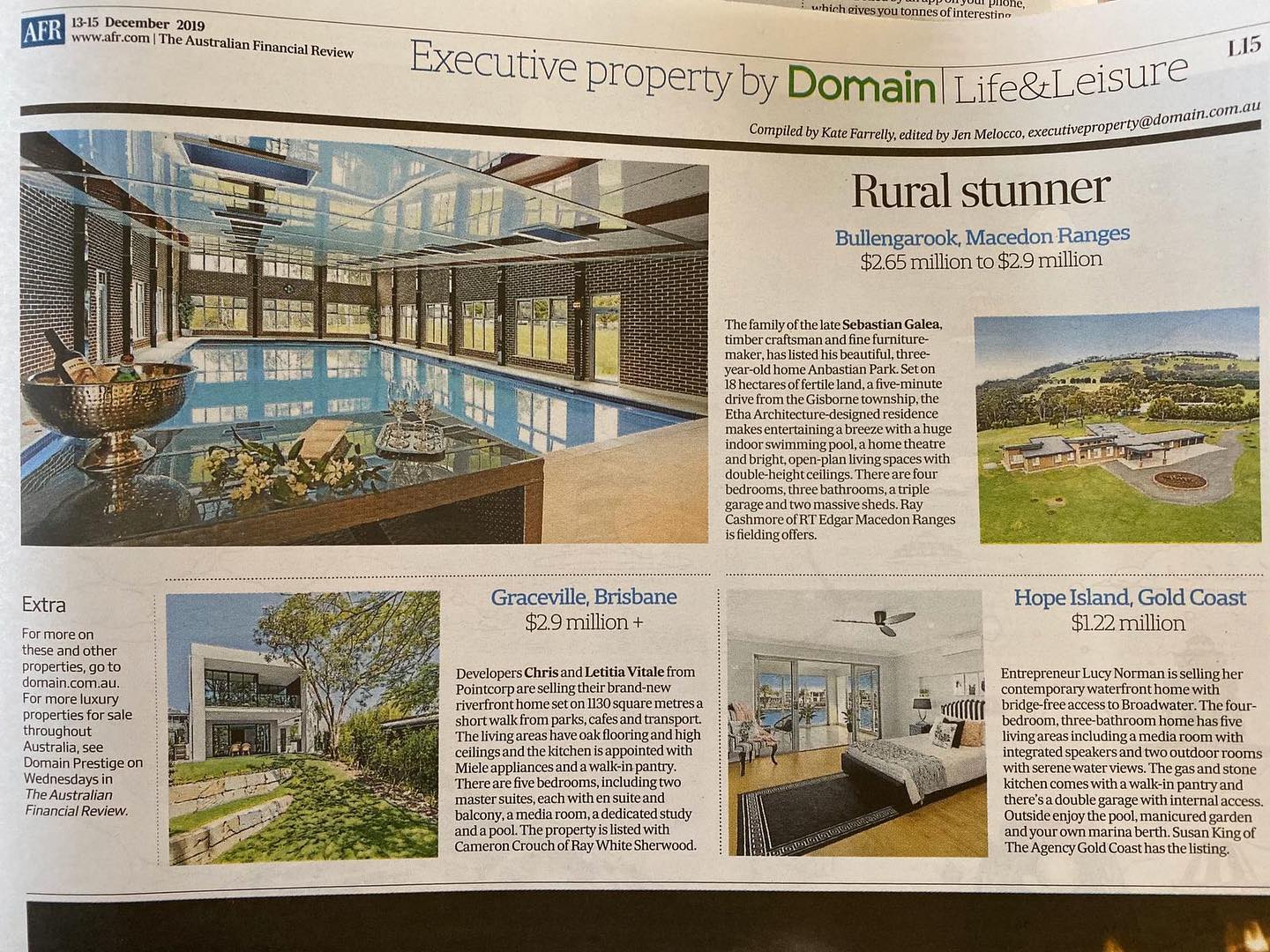Passivhaus
Danthonia Passivhaus
What is Passivhaus?
Passivhaus is a type of building construction that focuses on energy efficiency, occupant comfort, occupant health and environmental sustainability. This is achieved through calculated design standards and quality construction, to create low carbon footprints and healthy living environments.
Science and calculations are used throughout the design and construction process to create evidence-based drawings and technical details that can be measured and proven to ensure the comfort and health of all occupants.
It’s nice to know that what you want at the design stage is what will built on-site, and that it will perform as designed.
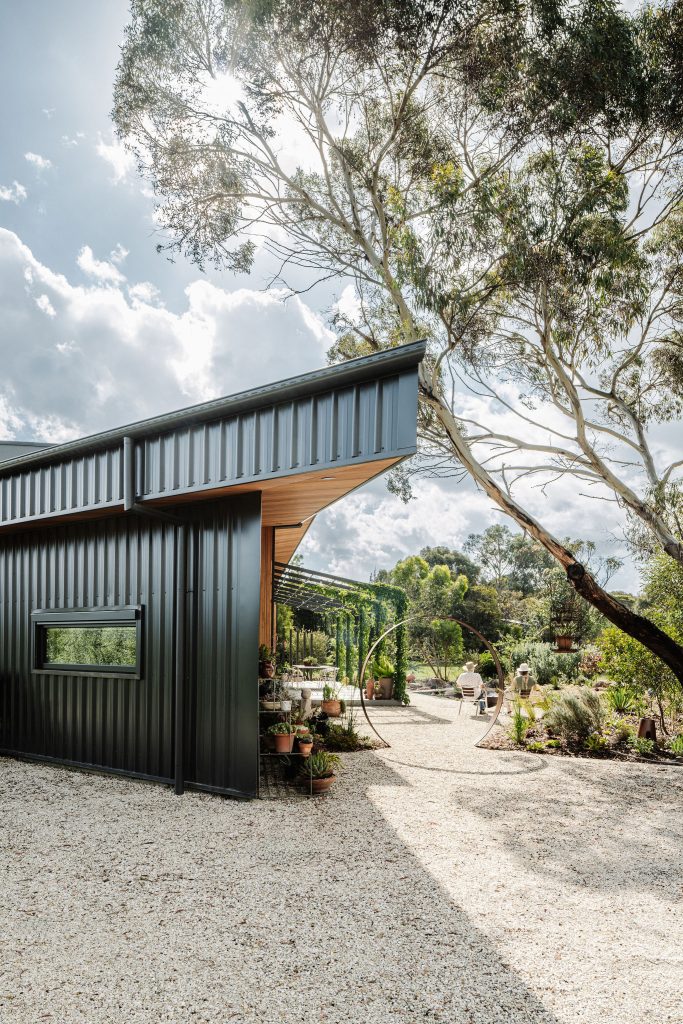
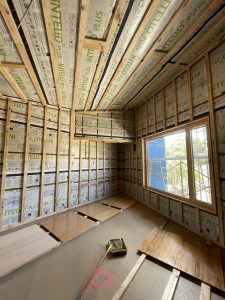
What considerations are required in a Passivhaus building?
- Air Tightness
A standard new house in the Macedon Ranges has 15.4 air changes per hour at 50 pascals. That means that the air inside the building needs to be cooled or heated 15.4 times every hour to keep the building at a constant temperature. Older houses may have around 30 air changes per hour.
A certified passive house requires only 0.6 air changes per hour. This is achieved with membranes, which are wrapped around the house and installed at a much higher standard than a typical new house.
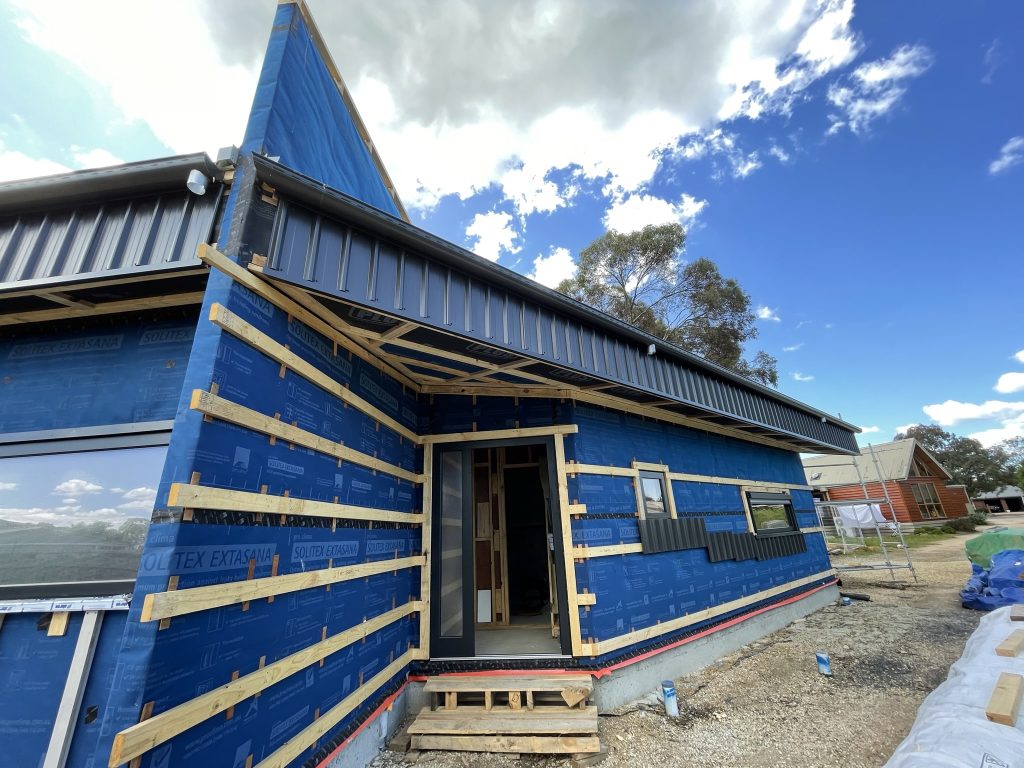
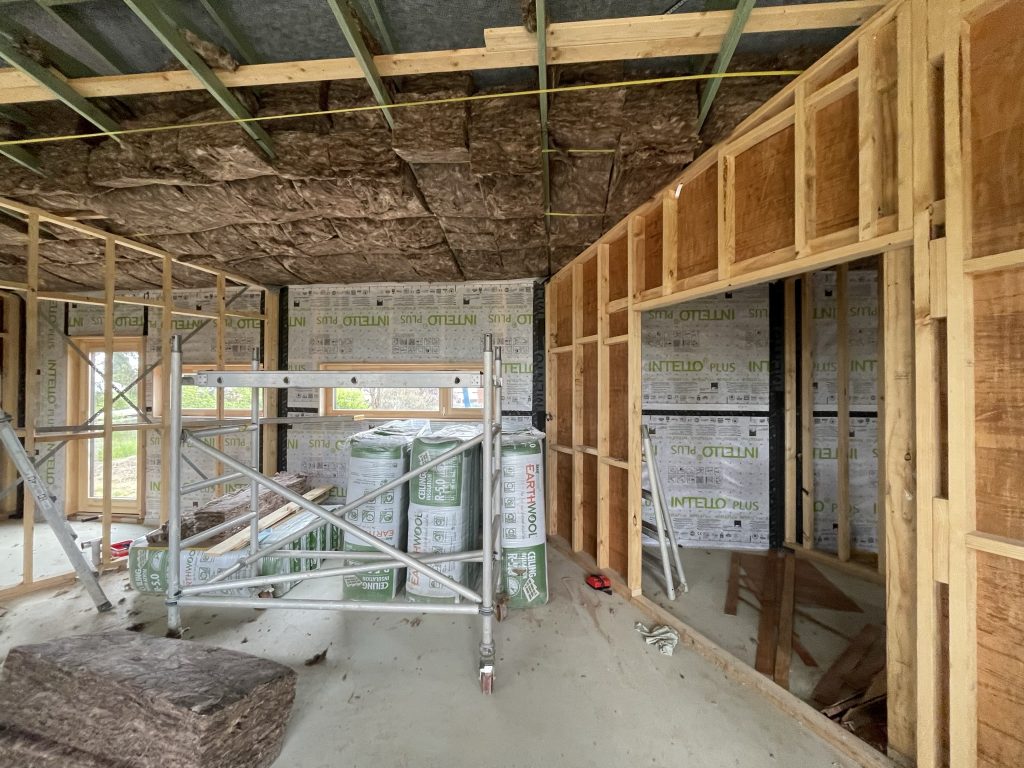
- Insulation
Insulation in walls, ceilings and floors are required at a much higher value than in a standard new house.
- Heat Recovery Ventilation
A heat recovery ventilation (HRV) unit is required to ensure that there is sufficient ventilation always brought into the building, however, this system does much more than opening a window. A HRV unit will suck stale, temperate air from inside the building whilst also bringing fresh cool/hot air from outside. The pipes then run next to each other inside the unit to transfer the heat from the air in the house to the fresh air from outside, ensuring when it is pumped into the building it is almost the same temperature as the building. The HRV also filters the fresh air.
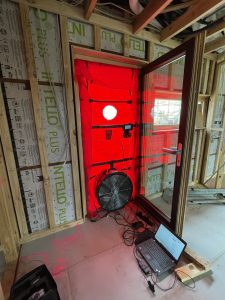
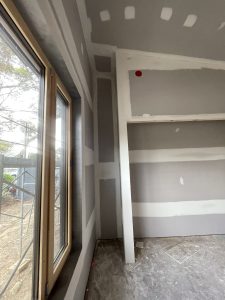
- High-Performance Windows
Ideally, a Passivhaus has triple glazing, however just as important is the window frames which is where most of the heat transfer from outside to inside usually occurs in a house. Thermally broken window frames are required to reduce this heat transfer.
- Reduced Thermal Bridges
Material choices and construction methods need to be carefully thought out to ensure that heat does not easily transfer through the construction materials into the building. An example is a steel frame which will heat up from the sun and that heat will travel directly into a building making the building too hot, or alternatively too cold on a winters day.

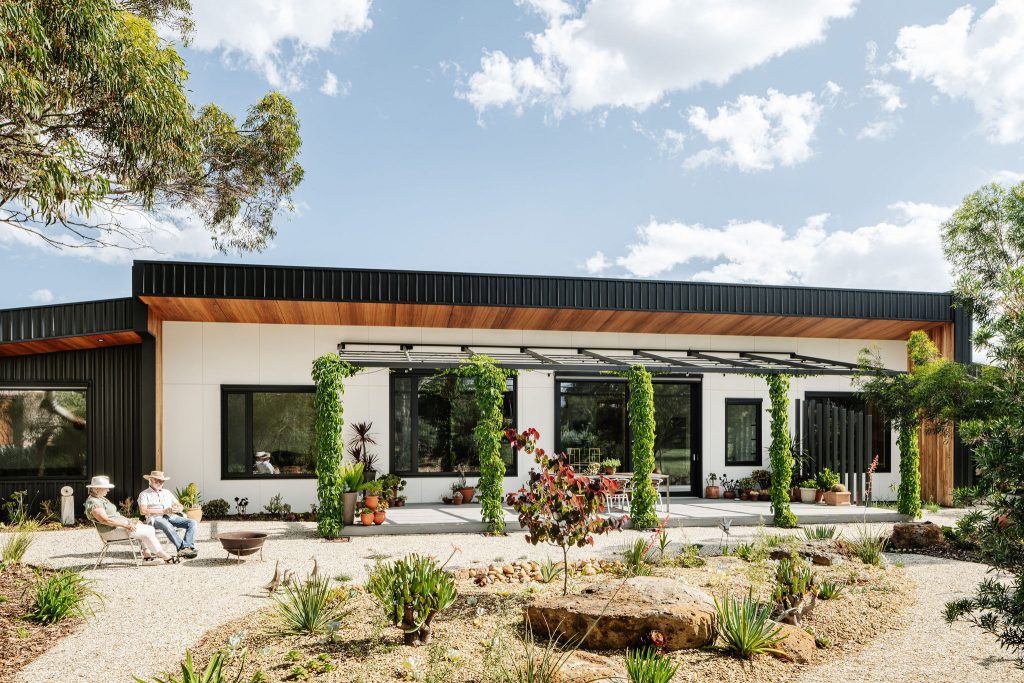
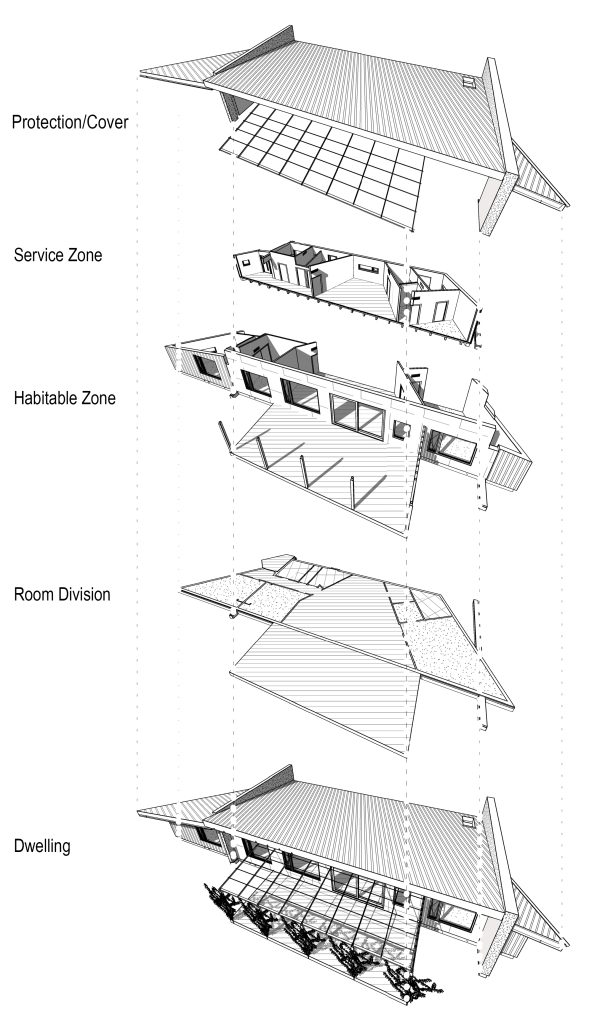
What is the Passivhaus design process?
My Danthonia Passivhaus actually started off as a solar passive house, due to early budget constraints. This means that it faced north to ensure that the right amount of sunlight came into the house in the cooler months and was blocked from entering the building during summer. Northern light is easier to control than eastern and western light due to its angle when it rises and sets, think of a hot summer afternoon and the sun still coming into the house making it hotter as it sets.
The design also allowed for cross ventilation, air moving through the house to cool it naturally. This is still possible in the design because opening a window when you want to is totally fine in a passive house.
Once light, views and every other item in the brief were included in the design a calculation was undertaken to measure the size of the house (the smaller the better), the materials to be used, the construction method etc. As the process went on details such as the type of oven selected and how many laptops that where going to be used in the house was recorded to check how much heat those items would produce.
Once all the calculations were undertaken and the above 5 points were covered the design was checked by an external consultant to ensure that everything was correct and that the house would perform as it was designed to.
What is the Passivhaus construction process?
The builder needs to follow all the details in the drawings exactly to ensure what has been designed and certified will be what is achieved when the occupants move in. The builder takes photos of every step of the process, including all deliveries to ensure that what was specified in the drawings is what has been built.
At the end of lock up stage it is a good time to undertake a preliminary blower door test. This checks to see if the house is as air tight as it has been designed to be. A lot of details need to be perfect to ensure the building gets that 0.6 air changes per hour or less result. Danthonia Passivhaus received a final blower door test of 0.3 air changes per hour. Amazing attention to detail achieved this result.
Once that final test is complete it goes together with all the evidence collected during construction and is then also verified by an independent consultant from the Passive House Institute. It can only be called a certified Passivhaus if you have this certificate and as of March 2025 only 87 buildings have this certification in Australia (information from the Australian Passivhaus Association).
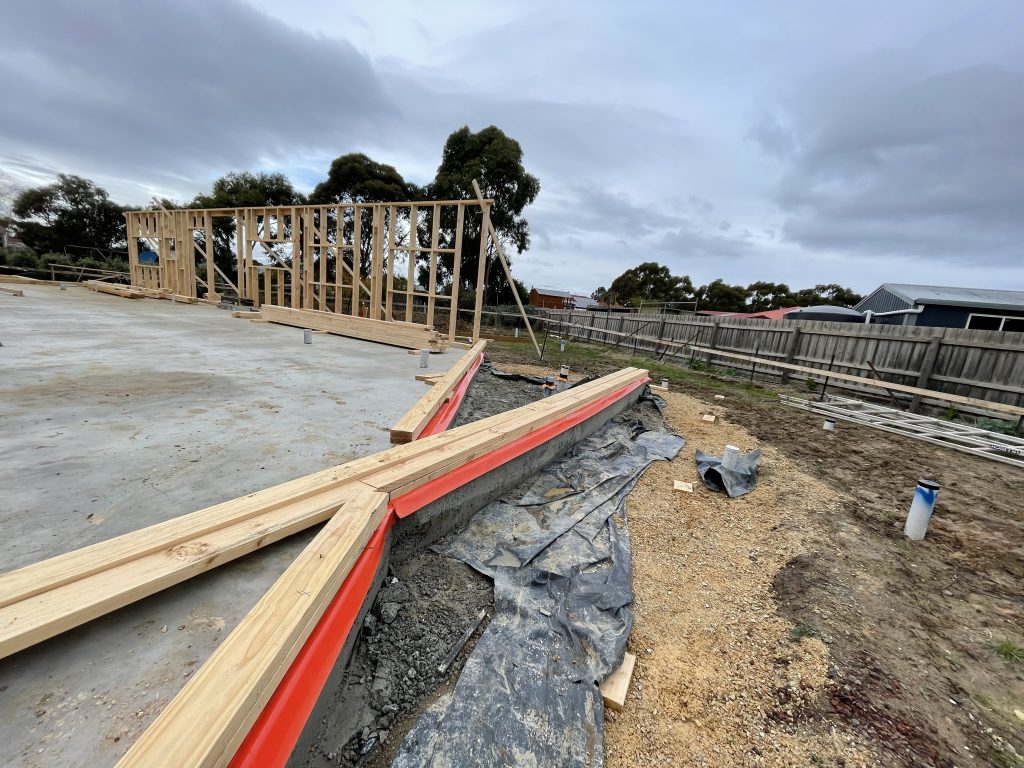


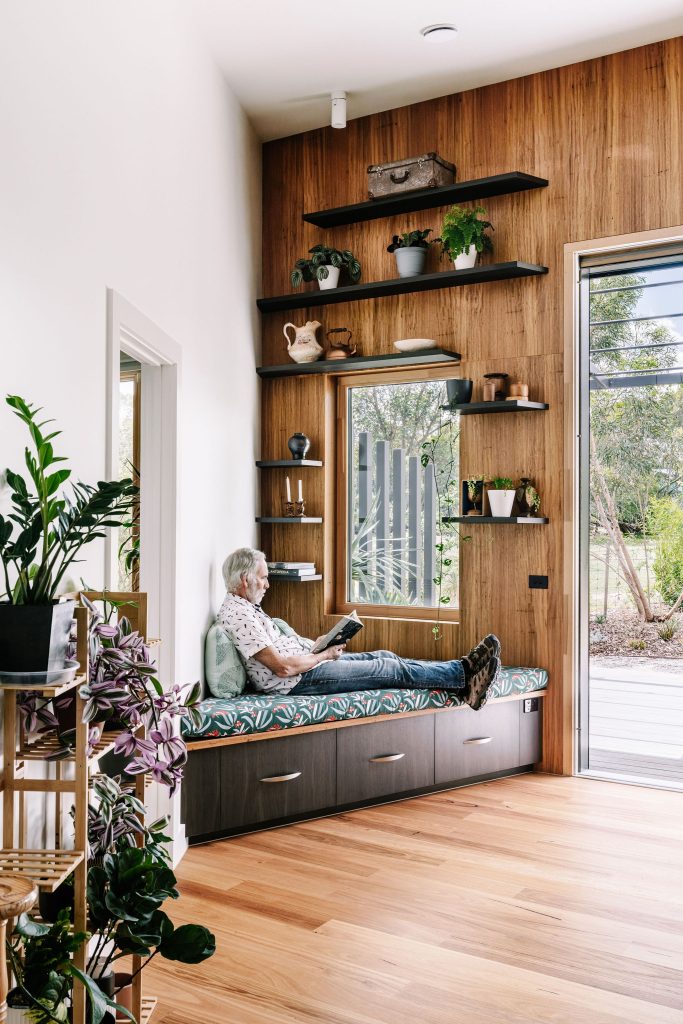
What are some of the challenges living in a Passivhaus?
The time and detail required to design and build a Passivhaus is a lot more intense than building a standard new home, so that needs to be factored in when working out the houses scheduling.
The occupants of the house also need to be educated on how to use their house. For example how the above 5 elements combine to make the home more comfortable and healthy, the outcomes should they open windows or if there is a gathering of multiple people in the home (additional heating load). They also need how to use the HRV unit, clean its filter (approx. every 6 mths) and in the case of Danthonia Passivhaus when to close the external blinds in winter to reduce the heat gain of the direct sunlight into the house.
How much is a Passivhaus?
You should expect to pay more for a Passivhaus compared to a new house by a developer when you compare the price per square meter. That is due to the additional time required for the design, the additional consultants along with the additional materials such as membranes, increased insulation, HRV units, higher spec windows etc.
A Passivhaus however does compare to an architecturally designed home at a rate per square meter as long as the focus is on the Passivhaus elements of the design compared to internal and external finishes etc.
The most important aspect to remember in relation to costs is that once you have built a Passivhaus there is minimal ongoing costs especially in relation to heating and cooling of the house, which are often huge costs in the Macedon Rangers.
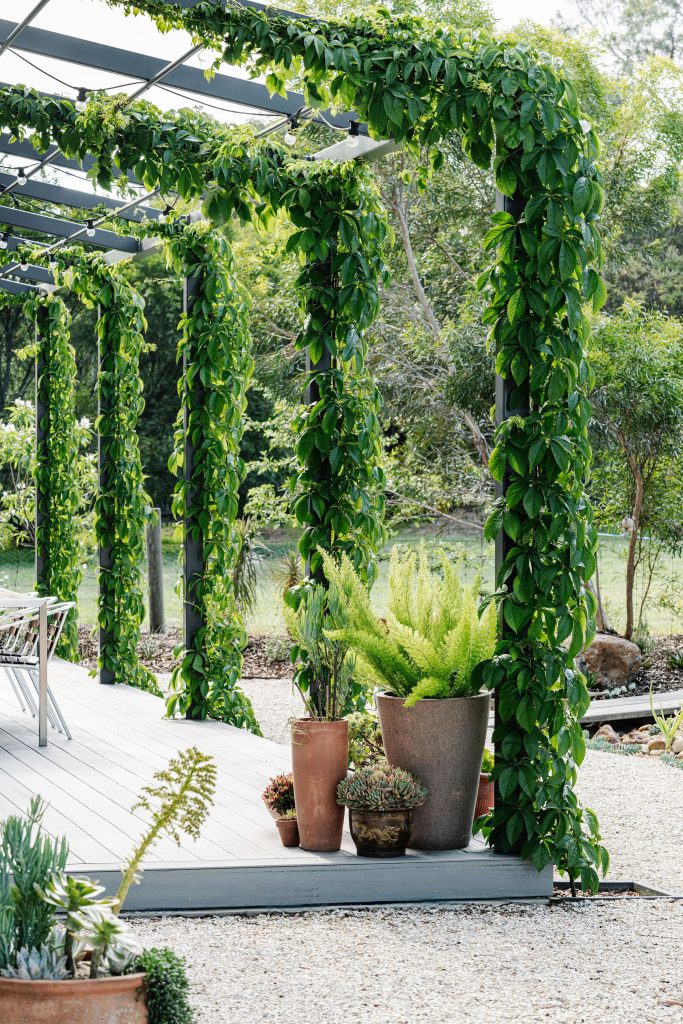

What does it feel like to live in a Passivhaus?
Well, I really wish I knew, because just standing in Danthonia Passivhaus for just a few minutes is so calm, relaxed, warm and comfortable. Occupants really get used to that constant temperature and therefore comfort. Danthonia Passivhaus owners say they would rather stay home than go on holiday, so there really isn’t anything else to it. I don’t think I could design a home with anything less that this level of comfort and health for anyone else!
Also, because the house’s energy requirements have been calculate in advance, occupants will have a good idea of any energy costs the house will have prior to it being build. Danthonia Passivhaus has solar panels that easily cover all the houses energy needs and has even exported more electricity than it has imported over its first year. This allowed its occupants to live in the Macedon Rangers with little to no ongoing electrical, heating or cooling costs- how amazing is that!
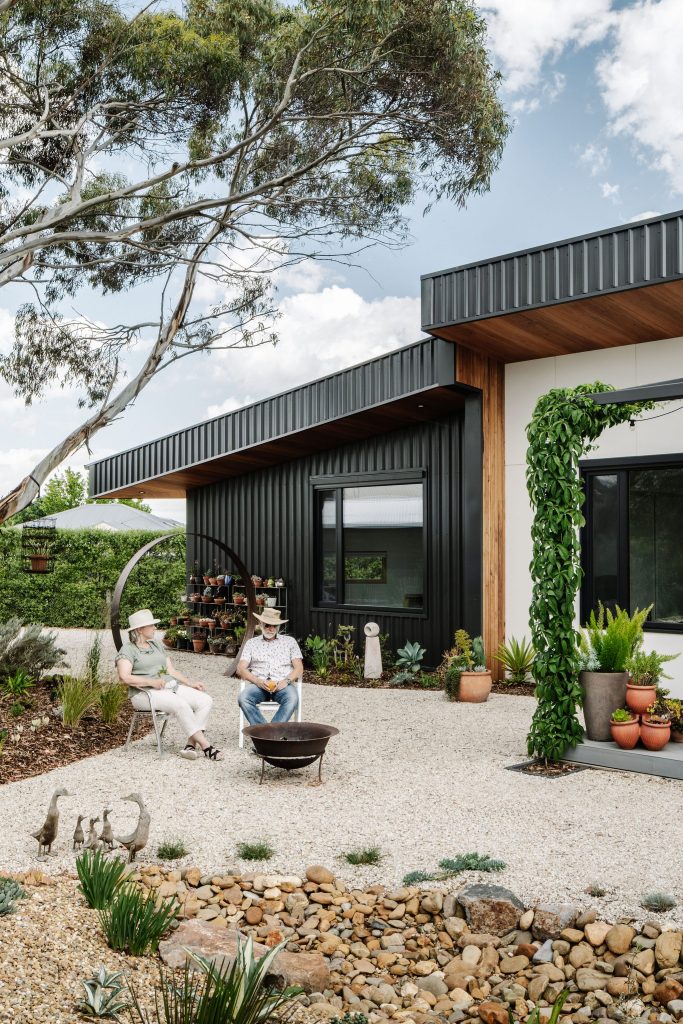
Disclaimer– the above information is solely from my experience in designing Danthonia Passivhaus, completed 2023. As this construction type grows in Australia the collective knowledge is broadened and amended. See the above information as a brief overview of Passivhaus. To find out more information contact Australian Passivhaus Association.


